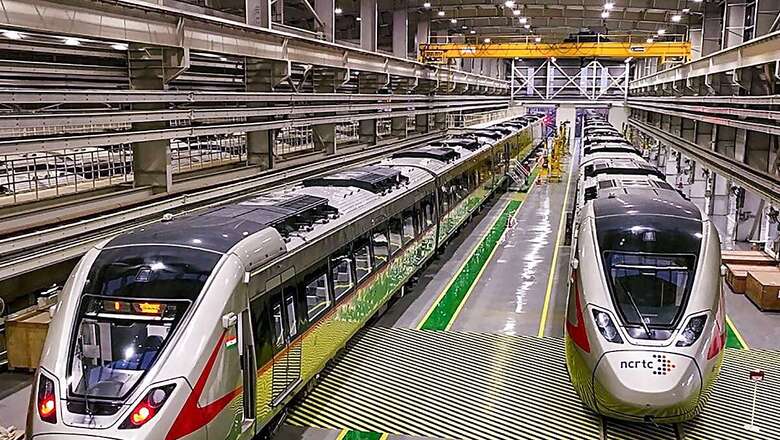
views
To ensure that there is continuous fresh air circulation for a comfortable, safe, and pleasant travel experience for passengers in the underground stations, the National Capital Region Transport Corporation (NCRTC), building the Delhi-Meerut Regional Rapid Transit System (RRTS), is installing advanced environmental control systems (ECSs), an official statement announced on Thursday.
The systems, the corporation said, are being installed to maintain optimal temperature and fresh air quality by continuously regulating the cooling and ventilation requirements of the stations.
“This ECS is being installed at all four underground stations on the Delhi-Ghaziabad-Meerut corridor –. Anand Vihar in Delhi, and Meerut Central, Bhaisali, and Begumpul in Meerut. These stations are being constructed below the ground level at the depths ranging from 8 to 23 meters,” the statement said.
Passenger comfort
Underground stations have limited airflow compared to elevated ones, and so the systems are needed to ensure that the air quality is good and passengers comfortable.
“This ECS system features state-of-the-art, energy-efficient Air Handling Units (AHUs) designed to meet high air quality standards. It includes electronically commutated (EC) motors that minimise energy loss and ensure reliable performance, enhancing overall energy efficiency. Also, strategically placed ultraviolet-C (UVC) lights combat airborne infections,” the statement added.
Water-cooled chillers, CO2 sensors at stations
Further, the NCRTC has planned efficient water-cooled chillers with high-performance capability to provide optimum comfortable temperature and freshness inside the stations. It will also maintain the humidity level in the station, ensuring a comfortable and cosy ambience for commuters.
“To ensure optimal air quality for Namo Bharat passengers, CO2 sensors are installed at the station public areas to monitor CO2 levels. A logic controller analyses this data and regulates fresh air intake levels as and when necessary, ensuring proper ventilation,” it said.
The NCRTC has also adopted various new-age tools to strategically plan the environment control system. These advanced tools help to prevent the formation of hot or cold spots within the stations, optimising station layout and infrastructure design for passenger comfort.
“Rigorous AC load assessments further ensure desired passenger comfort with minimum energy consumption,” the statement said.
In Meerut, underground stations at Meerut Central and Bhaisali pose additional challenges due to their longer lengths and shorter platforms of around 75 metres for metro trains. These stations accommodate four tracks—two for Meerut Metro and two for Namo Bharat trains to pass through.
Further, at Anand Vihar RRTS station, the NCRTC has introduced an innovative solution for the placement of ECS fans. Instead of the conventional parallel placement, these fans are installed perpendicular to each other. This unique configuration effectively addresses the challenge of space constraints.
Currently, a 34-km section of the RRTS between Sahibabad and Modinagar North in Ghaziabad, with eight elevated stations is operational. The entire corridor is expected to be operational by the targeted deadline of 2025.













Comments
0 comment